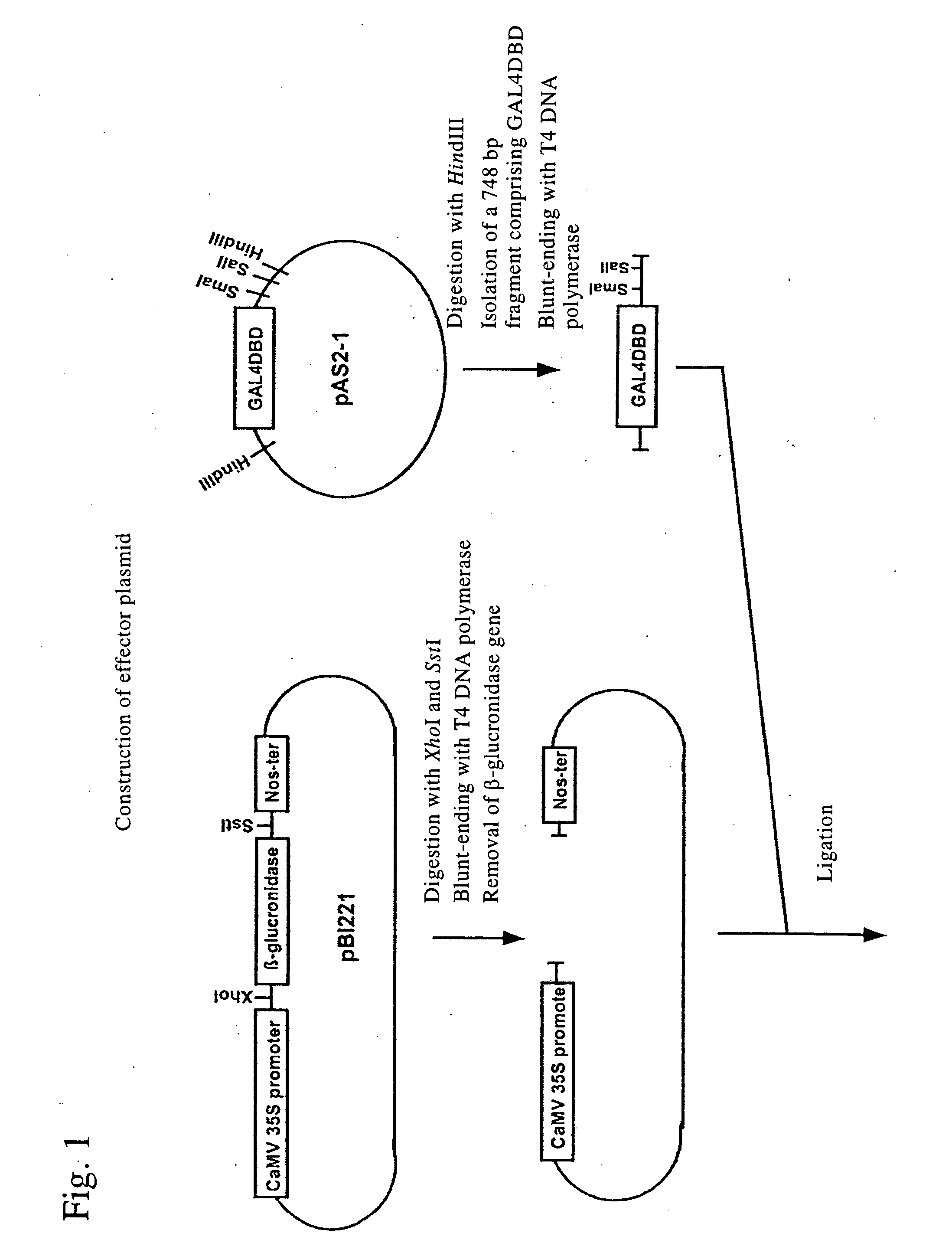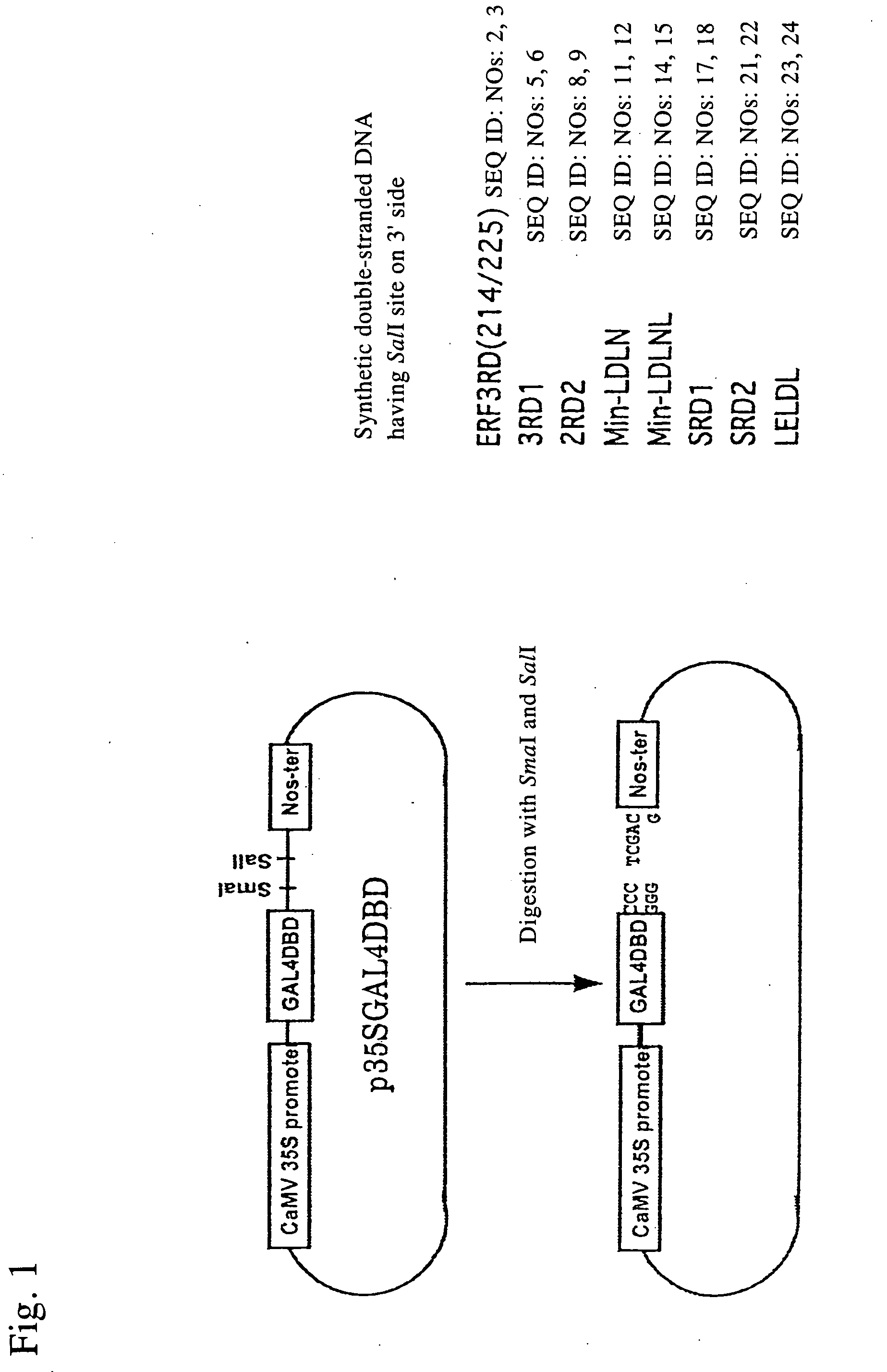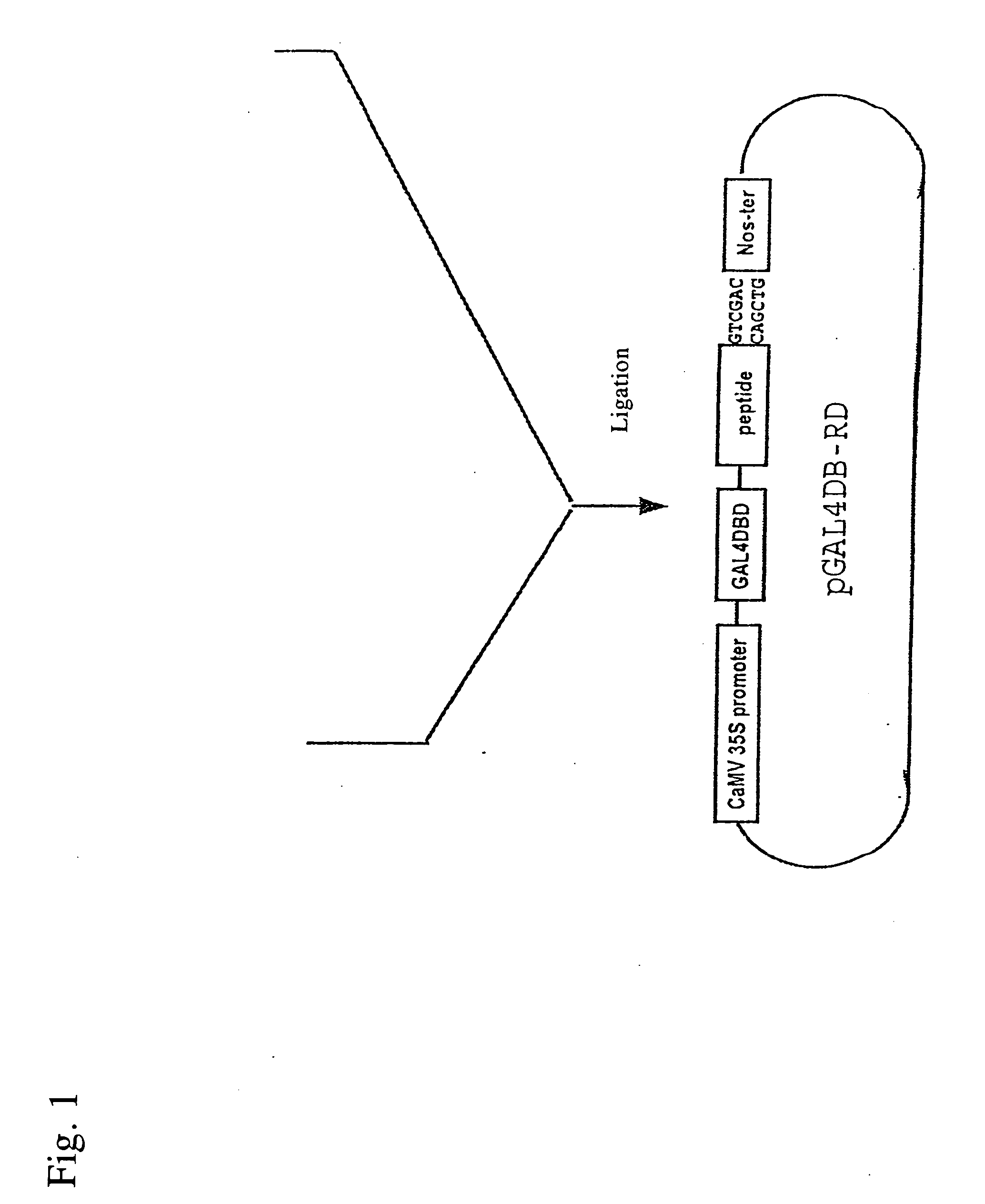Transcription regulatory gene and peptide
- Summary
- Abstract
- Description
- Claims
- Application Information
AI Technical Summary
Benefits of technology
Problems solved by technology
Method used
Image
Examples
example 1
Identification of Peptide that Serves as a Repression Domain
(1) Construction of Effector Plasmid pGAL4 DB-RD (FIG. 1)
[0113] Plasmid pBI221 (Clontech, U.S.A.) was cleaved with restriction enzymes XhoI and SacI and blunt-ended with T4 polymerase. Thereafter, the GUS gene was removed by agarose gel electrophoresis to obtain a fragment of 35S-Nos plasmid DNA comprising the cauliflower mosaic virus 35S promoter (hereafter referred to as “CaMV 35S”) and a transcription terminator of the nopaline synthase gene (Nos terminator, hereafter referred to as “Nos-ter”).
[0114] The pAS2-1 vector (Clontech) was digested with a restriction enzyme HindIII, a 748 bp DNA fragment encoding a DNA-binding domain of the yeast GAL4 protein (hereafter this fragment (the 1 / 147 region) is referred to as “GAL4DBD”) was isolated by agarose gel electrophoresis, and the isolated fragment was blunt-ended with T4 DNA polymerase. This DNA fragment comprising the GAL4DBD-encoding region was inserted in the blunt-en...
example 2
Repression of Transcription by SUP Gene-Containing Effector Plasmid
(1) Isolation of SUP Gene
[0130] The nucleotide sequence of the SUP gene has already been reported. Oligonucleotides having sequences corresponding to the sequences on the 5′-side and the 3′-side of the protein-encoding region of the SUP gene of Arabidopsis thaliana were synthesized, and PCR was carried out using the resulting sequences as primers and using the TAC clone:K14B15 (assigned from the Kazusa DNA Research Institute) comprising the SUP gene as a template. The DNA fragment comprising the protein-encoding region of the SUP gene was isolated. The total nucleotide sequence was determined, and it was confirmed to be the protein-encoding region of the SUP gene that had been already reported. The conditions for the aforementioned PCR was as follows: 25 cycles each consisting of denaturation at 94° C. for 1 minute; annealing at 47° C. for 2 minutes; and elongation at 74° C. for 1 minute.
(2) Construction of Effe...
example 3
Effects of Gene Encoding the 175 / 204 Repression Domain of SUP in Repressing Transcriptions Activated by EIN3 in Plants
(1) Construction of Transformation Vector pBIG2
[0156] Plasmid p35S-GFP (Clontech, U.S.A.) was cleaved with restriction enzymes, HindIII and BamHI, a DNA fragment comprising the cauliflower mosaic virus 35S promoter (CaMV 35S) was separated by agarose gel electrophoresis, and the separated fragment was recovered. The plant transformation vector pBIG-HYG assigned from Michigan State University, U.S.A. (Becker, D., 1990, Nucleic Acid Research, 18: 203) was cleaved with restriction enzymes, HindIII and SstI, and a DNA fragment from which the GUS gene had been removed by agarose gel electrophoresis was obtained.
[0157] The following DNA strands were synthesized, incubated at 70° C. for 10 minutes, and annealed by natural cooling to prepare double-stranded DNA. This DNA fragment comprises BamHI restriction site at its 5′ terminus, the omega sequence derived from the tob...
PUM
| Property | Measurement | Unit |
|---|---|---|
| Fraction | aaaaa | aaaaa |
| Fraction | aaaaa | aaaaa |
| Fraction | aaaaa | aaaaa |
Abstract
Description
Claims
Application Information
 Login to View More
Login to View More - R&D
- Intellectual Property
- Life Sciences
- Materials
- Tech Scout
- Unparalleled Data Quality
- Higher Quality Content
- 60% Fewer Hallucinations
Browse by: Latest US Patents, China's latest patents, Technical Efficacy Thesaurus, Application Domain, Technology Topic, Popular Technical Reports.
© 2025 PatSnap. All rights reserved.Legal|Privacy policy|Modern Slavery Act Transparency Statement|Sitemap|About US| Contact US: help@patsnap.com



